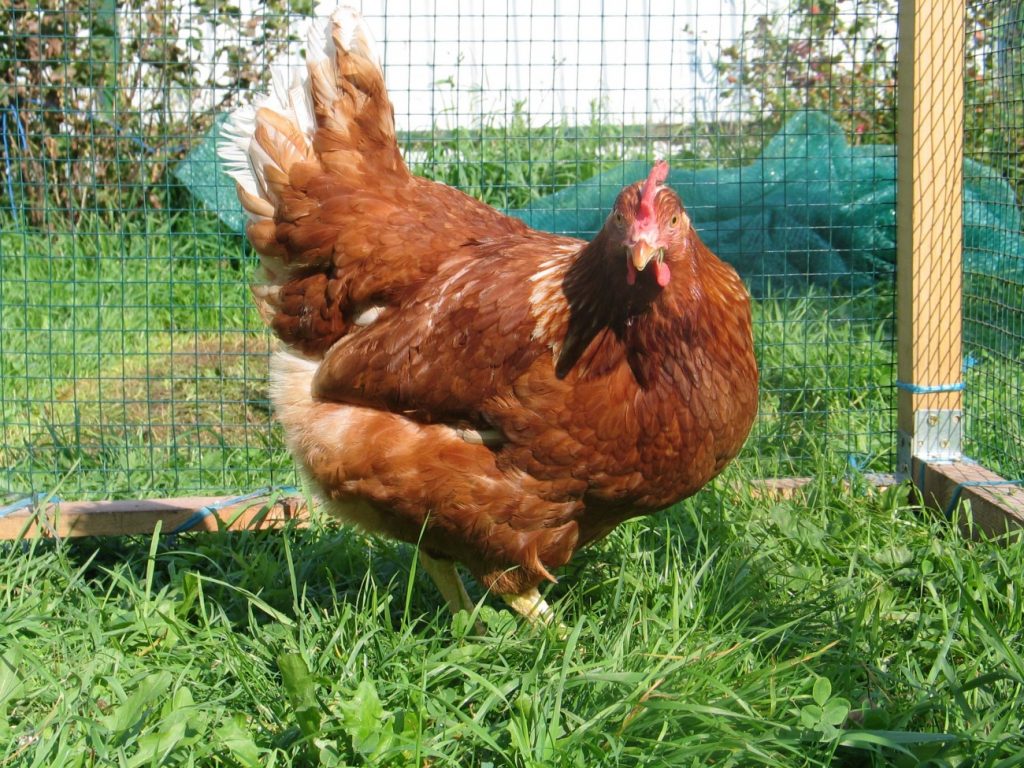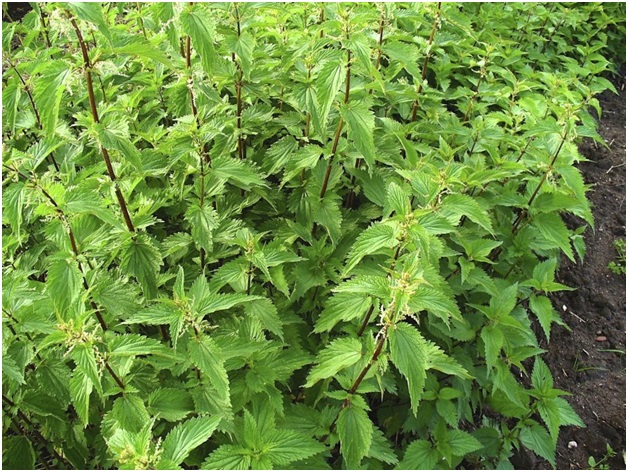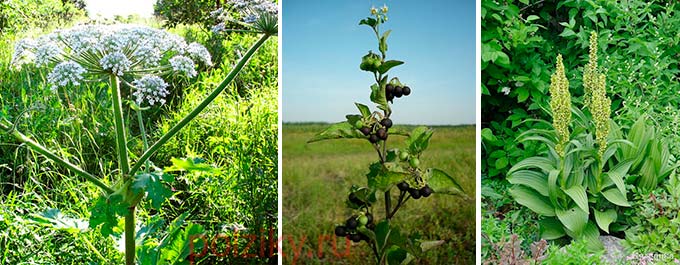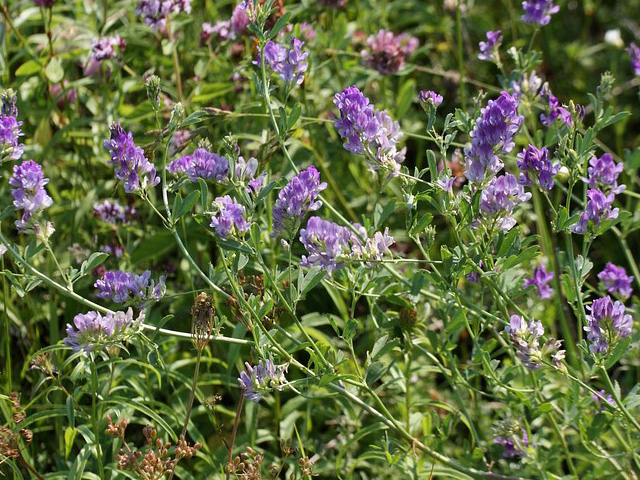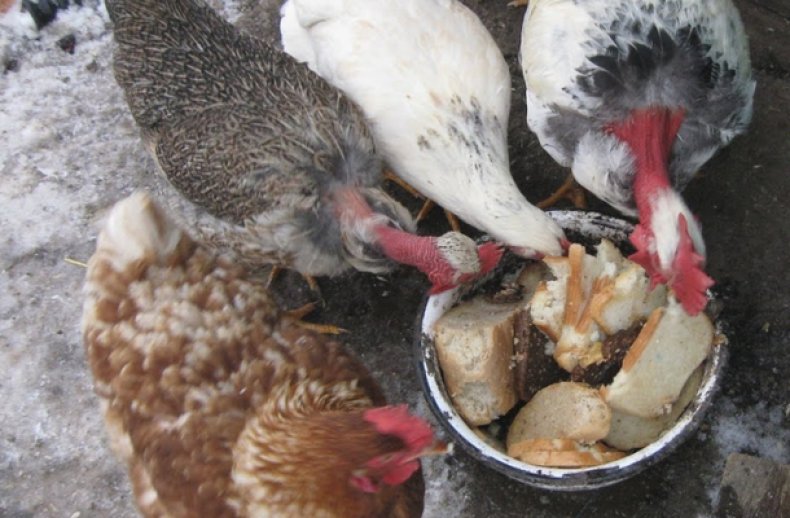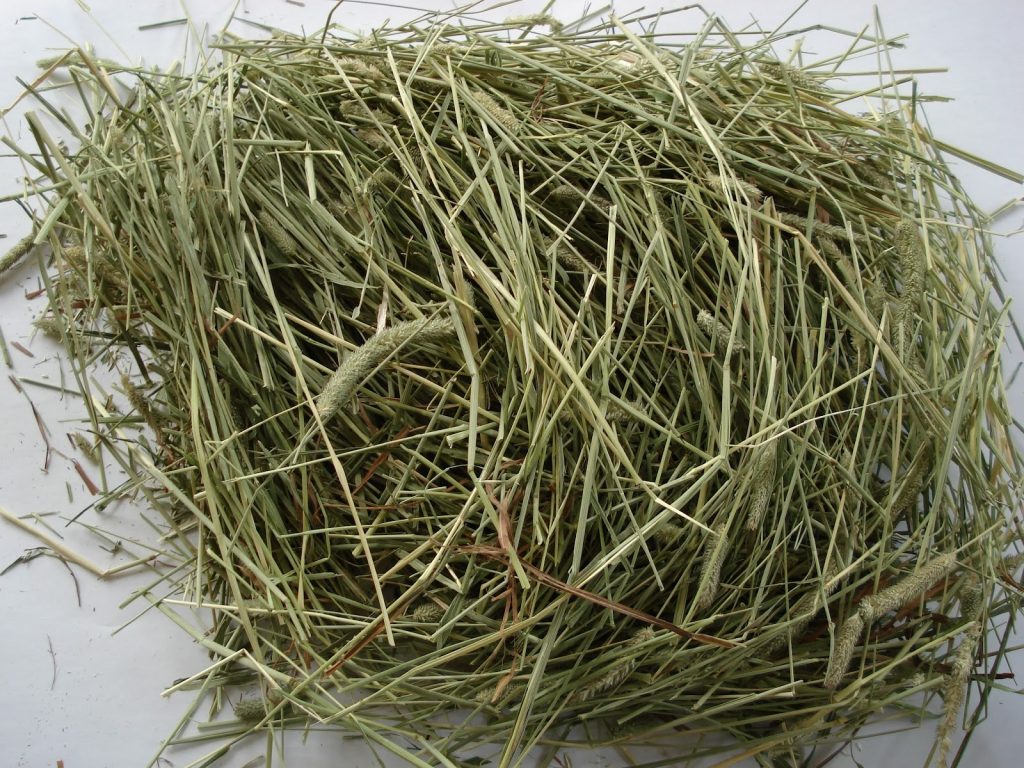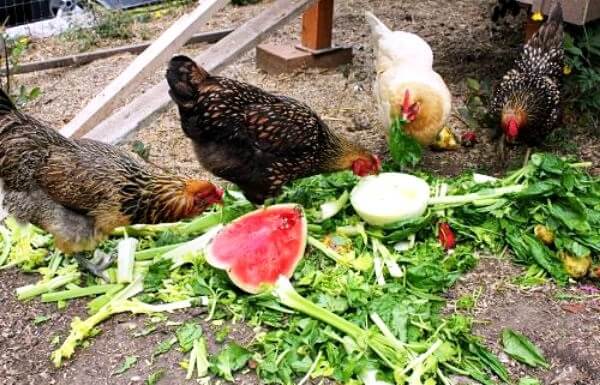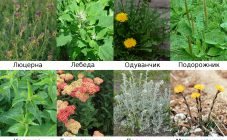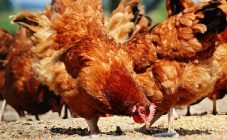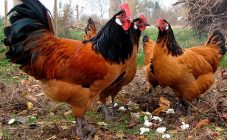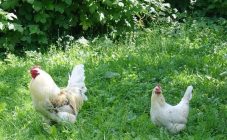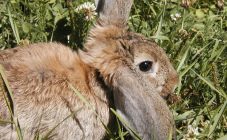Content:
Proper feeding is an essential part of caring for chickens. Only if you give the chicken high-quality and balanced feed, you can get large and high-quality eggs. From the article we learn what kind of grass can be given to chickens, chickens, so that they are healthy, run well and do not get sick.
Feeding chickens
Poultry farmers recommend feeding the poultry kitchen, garden and garden waste. They eat well, for example, potatoes unsuitable for food use, peeling. Moreover, one individual is able to eat up to 100 g of this product per day.
Chickens are also fed stale and dry soaked bread. Fish giblets, heads, bones, and leftovers of meat can go into the feed. They will gladly eat cabbage leaves, fruit and berry leftovers.
Protein food includes the following components:
- milk;
- buttermilk;
- cottage cheese;
- curdled milk;
- shellfish;
- frogs;
- small fish.
For nutrition, dry types of compound feed are used. Moreover, it is advisable to choose such varieties that are designed specifically for chickens and include additives to increase the dryness.
The feed ingredients are grain products: oats, millet, barley and bran. These components should be at least 60%. The remaining 20-25% is maize and legumes. Finally, the rest is berries, minerals, bone meal, herbs.
Although layers are omnivorous, there are foods that should not be added to the bird's diet. Some unscrupulous farmers and poultry breeders try to give the poultry sour and slightly rotten products. The laying hen will eat it, but it can get sick. With improper feeding, various pathologies appear. Often, a chicken gets sick from being given green potatoes.
A list of products that categorically, under no circumstances, do not give a bird:
- sausages;
- smoked products;
- sausages;
- semi-finished products;
- cheese and butter;
- spice;
- confectionery;
- jam.
Grass for laying hens
In the summer, you can increase the amount of fresh herbs in the diet up to 50%. This will saturate the animal body with vitamins and microelements.
What herbs do chickens like:
- nettle;
- plantain;
- biting;
- wheatgrass;
- sweet clover;
- alfalfa;
- cereals;
- sorrel;
- clover;
- euphorbia grass.
It is always possible to add onion feathers, parsley, amaranth to the feed (the latter has a lot of protein useful for the chicken body).
In winter, you can give dried herbs, needles.
Unsuitable grass
Chickens eat only the grass they need, so they try to avoid poisonous plants. It is easy for novice poultry breeders to avoid poisoning - do not give forbidden grass to birds.
They must not eat:
- hemlock;
- cockle;
- hemlock;
- elderberry;
- white acacia;
- hellebore;
- bleached;
- belladonna;
- nightshade;
- horse chestnut;
- juniper;
- jaundice;
- potato flowers;
- burdock.
Among the prohibited are:
- beet tops;
- dill;
- green tomato leaves;
- pear leaves, as well as seeds.
.
Some types of herbs
What plants give chickens and at what age:
- Alfalfa strengthens the body, is a source of vitamin and protein.
- Some poultry farmers are interested in whether it is possible to give the chicken euphorbia. It is a good source of vitamins and should be added to the feeder daily.
- Dandelion is rich in vitamins and contains nutrients.
- Clover contains a lot of protein.
- Horse sorrel is a source of ascorbic acid.
- Quinoa for chickens is a source of vitamins.
- In the summer, broilers must be enriched with burdock.
- Some livestock enthusiasts are interested in whether it is possible to give grass to a chicken. Glum and thistle can be fed fresh or dried.
- Green mustard is used for fodder fresh or as silage.
- Wormwood is an excellent remedy for disease prevention.
- Phacelia is used for fodder both fresh and dried.
All these herbs are good to give from the first days of life.
Bread in the diet of chickens
Many poultry farmers are interested in whether it is possible to give bread to chickens, because it is a source of a large number of trace elements. It can be given to the bird by mixing with grass. It is not recommended to just feed the bird fresh baked goods.
You do not need to give a lot of bread to the bird, because it contains kitchen salt. It should not be given to animals in enclosures.
Harvesting feed for the winter
For poultry, it is necessary to prepare plant food for the winter. For this, waste of grain crops and residues from their processing, most types of fresh vitamin feed are suitable.
Novice poultry farmers will not have much difficulty in preparing the required amount of feed for chickens. For the winter, in terms of chicken, you need to stock up on 10 kg of potatoes, the same amount of root crops (and carrots should be at least 4 kg).
Hay is harvested from young grass. It is mowed before flowering or, in extreme cases, at the beginning. It should be dried in the shade, so that more vitamins are stored. The hay must be agitated, while it is necessary not to lose its valuable parts, which have the most vitamins. One chicken for the winter needs at least 3 kg of hay.
The bird eats well grass silage, which includes alfalfa and clover, young grass, cabbage leaves. You need to have 6 kg of such feed per head.
Birds, especially broilers, can eat quinoa. To prepare food, it is advisable to mix it with other plants. Lebeda is dried in the form of brooms in the summer, stored in ventilated rooms at low temperatures.
Rowan berries are a valuable vitamin feed. It should be harvested in early autumn. Berries are added to combined feed.
Training your chicken to eat grass
Grass for laying hens should be in their diet from the first days of life. Usually the swarms are unpretentious to the stern. However, some birds are reluctant to eat fresh green food. Since they need vitamins for bad luck and health, the bird should be properly taught to feed, "green" it.
To train chicken to green food, the first time you should add grass for chickens in a small amount. Usually, birds eat the whole portion in such a mixture. Birds can be fed with fruit. Further feeding them with green food is usually not difficult.
Chickens need to chop the grass, apples, pears. This will make them more willing to eat them. No bird can peck a large fruit entirely. It is more convenient if all the food for them is well chopped.
Chickens should be fed well-chopped pumpkin and carrots. This food is an excellent source of carotene. One individual must give up to 20 g of such products.
The chicken must be walked. If this is not done, then she will be sick and suffer from vitamin deficiency and obesity. It is recommended to hang the greenery slightly so that it can move.
Compliance with the rules of correct feeding is a prerequisite for the health and egg production of poultry. The presence of green food in her diet helps to maintain their health. A sufficient amount of vitamins in food contributes to the absence of diseases in the poultry industry.
